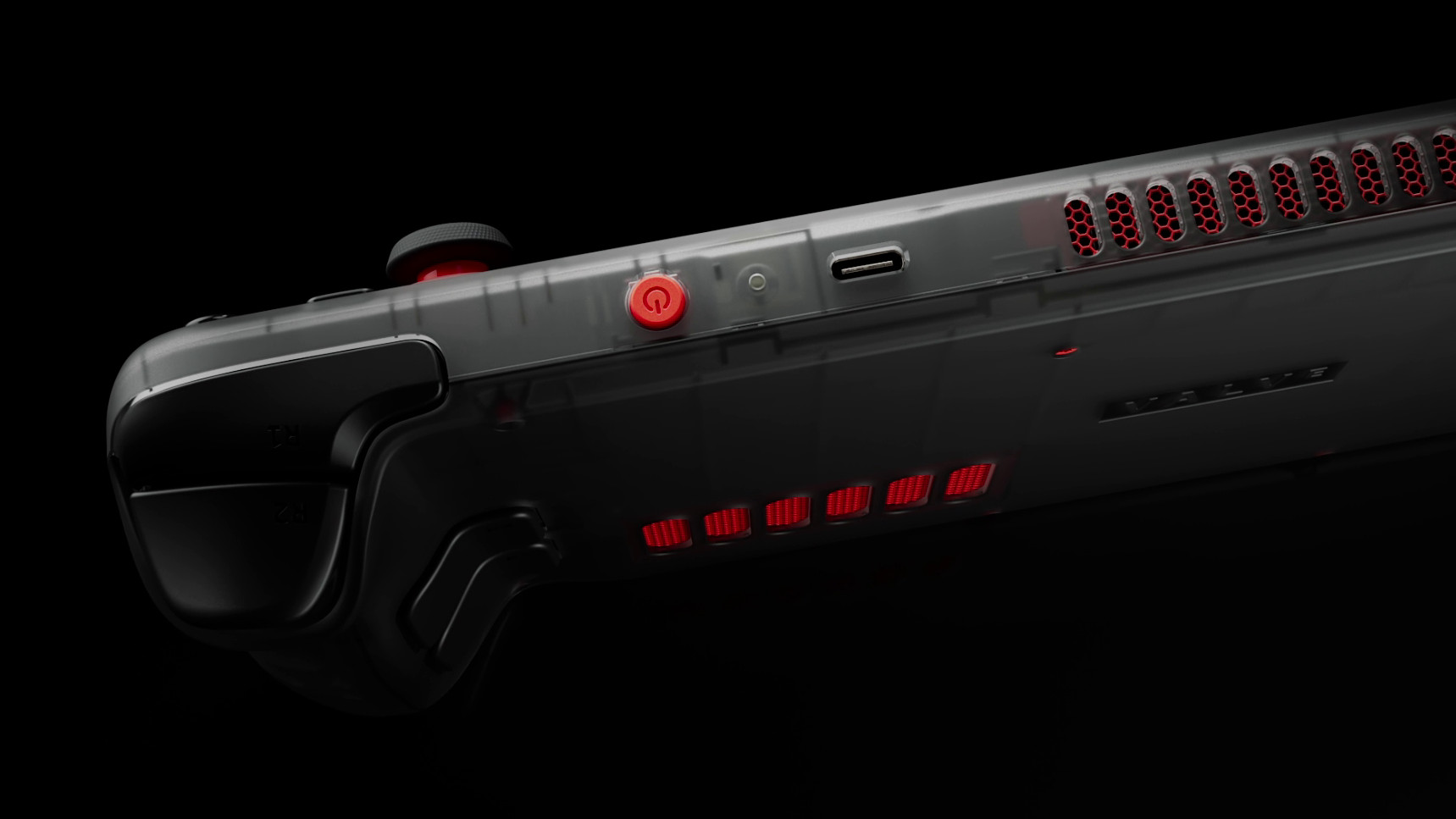
Rumors of a new Steam Deck have been floating around for a few months now, but few could’ve predicted that Valve had already completed its work on a new handheld.
Unveiled on Thursday (November 9), the Steam Deck OLED is an upgrade on the one-and-a-half year-old handheld and, while it’s not a major departure from this predecessor, the latest release offers some new features like HDR support, a Wi-Fi 6E Tri-Band antenna and a larger battery. But will games actually play better on the new OLED model?
The original Steam Deck — now referred to by Valve as the Steam Deck LCD — uses a 7 nm AMD APU that has a Zen 2 CPU with speeds between 2.4-3.5GHz and a GPU with 8 RDNA 2 CUs clocked at 1.0-1.6GHz. The Steam Deck OLED switches to a 6 nm AMD APU, but otherwise keeps all the same performance metrics.
In short, games likely won't play any better. But because of the upgrades to the display, they might look a lot better than they did on the first-generation Deck.
The Steam Deck OLED release date is set for November 16 with the base 512GB model set to cost $549 as well as a 1TB model for $649. Not sure if it’s worth plunking down on a new model? Here are the five major differences between the Steam Deck OLED and the original Steam Deck.
Difference #1: The OLED screen

The most obvious difference between the two models is that the latest Steam Deck uses an OLED screen (duh). Beyond just getting better black levels, however, the new OLED screen is also 0.4 inches larger than the screen found on the original Steam Deck, and it supports HDR. Unfortunately, there’s no uptick in resolution — it’s still a 1200 x 800 resolution — but thanks to HDR support and the OLED panel, you can expect to see huge upticks in color saturation and contrast.
While OLED might not be the first name in brightness, the Steam Deck OLED will actually have a higher peak brightness than its predecessor — between 1,000 nits in HDR and 600 nits in SDR. Compared to the Steam Deck LCD’s average brightness of 400 nits, the new OLED model should be noticeably brighter.
Valve also mentions on its new Steam Deck website that the OLED screen now supports “up to 90Hz” refresh rate compared to the 60Hz rate of the original Steam Deck. Unfortunately without VRR, there’s no way for the handheld to bounce between refresh rates, so you’ll be locked in depending on what number you set a game’s fps to — 30fps will use 90Hz; 40fps uses 80Hz, etc…
Difference #2: Improved battery life

Despite the new screen and uptick in brightness, Valve claims that the Steam Deck OLED will offer a 30-50% longer battery life. That’s due to an upgrade on the battery itself which goes from a 40Whr battery to a 50Whr battery.
It’s our assumption that the bigger battery plus the OLED screen are what’s accounting for the increase in performance.
Difference #3: Wi-Fi 6E antenna
While there hasn’t been a huge uptick in specs, Valve has traded out the Dual-band Wi-Fi 5 radio for a Tri-band Wi-Fi 6E radio that operates on the 2.4GHz, 5GHz, and 6GHz bandwidths. That means better connectivity and faster download speeds.
Difference #4: Less prone to overheating and lighter

Another less apparent upgrade are the improvements Valve made to the thermals and overall weight of the handheld. The new Steam Deck OLED weighs just 640 grams (down from 669 grams) — or approximately 1.4 pounds.
On the thermal side, the switch in APUs and removal of the LCD backlight probably allow for better airflow through the console. OLED screens also typically generate less heat than non-OLED screens, too.
Difference #5: More storage space
Need a larger SSD to keep up with your ever-expanding Steam library? The Deck OLED will be available in two storage configurations: 512GB and 1TB. In terms of pricing, the 512GB model will launch at $549 — $100 more than the equivalent Steam Deck LCD model — while the 1TB handheld will launch at $649.
It’s also worth pointing out that there’ll also be a 1TB special edition Steam Deck OLED with a transparent backing for $679. Considering it's only $30 more than the standard version, it's probably worth trying to grab one while you can.
Verdict: The Steam Deck OLED looks awesome

It’s almost impossible not to draw the comparison to what Nintendo did with the Switch. The Nintendo Switch OLED might not have offered a huge uptick in performance compared to the base model, but the small upgrades like the larger OLED screen and better battery life made a massive impact on how good the console was overall.
The same thing is absolutely true for the Steam Deck OLED — no one upgrade is a game changer on its own, but the combination of all the small refinements means that Valve’s already popular handheld is about to get even better.
More from Tom's Guide
Sign up to get the BEST of Tom's Guide direct to your inbox.
Get instant access to breaking news, the hottest reviews, great deals and helpful tips.

Nick Pino heads up the TV and AV verticals at Tom's Guide and covers everything from OLED TVs to the latest wireless headphones. He was formerly the Senior Editor, TV and AV at TechRadar (Tom's Guide's sister site) and has previously written for GamesRadar, Official Xbox Magazine, PC Gamer and other outlets over the last decade. Not sure which TV you should buy? Drop him an email or tweet him on Twitter and he can help you out.
